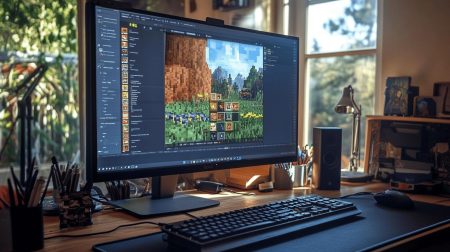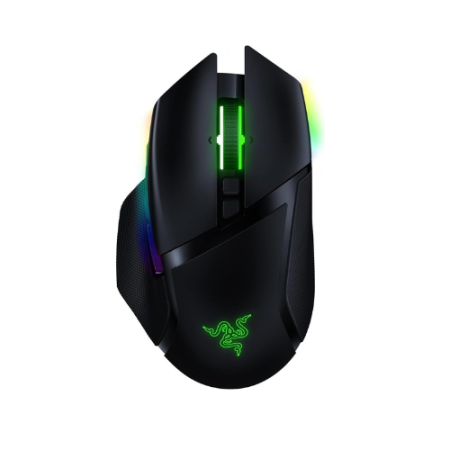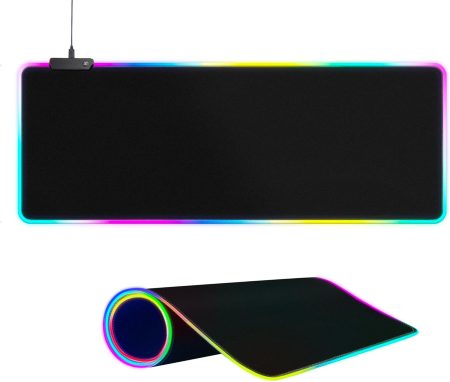Due to the wide range of motherboard form factors, certain computer cases may be incompatible with others. However, many motherboards with lesser dimensions may fit without problems inside larger PC cases.
These days, a micro-ATX motherboard is the standard choice for a desktop computer, whether for business or gaming. So, it’s fair to wonder whether a micro-ATX motherboard would even fit in an ATX computer case.
A micro-ATX motherboard will fit well in an ATX or mid-tower computer chassis. For a micro-ATX motherboard, the maximum allowable dimensions are 244 mm by 244 mm. Another similarity between micro-ATX and standard-ATX motherboards is the placement of the mounting holes. In other words, there won’t be any problems with compatibility.
Standard Mini ATX Motherboard Dimensions
In addition to their smaller size, micro-ATX motherboards are more affordable than ATX motherboards. This is because they generally have fewer features and are less expensive to produce.
Despite their smaller size, micro-ATX motherboards still offer a good balance of features and performance, making them a popular choice for many users. However, it is worth noting that micro-ATX motherboards have some limitations compared to ATX motherboards.
For example, they may offer fewer RAM slots and PCIe slots, which can limit the expansion and upgrade that can be done.
Standard Form Factor ATX Case

Mid-tower is another name for the ATX case. Standard dimensions for an ATX case are between 15 and 25 cm in depth and 35 to 55 cm in height.
A computer user may have sufficient working space within an ATX chassis. Large video cards up to 300 mm in length may be installed. Additionally, it can accommodate fans with a diameter of 120–200 mm.
Do ATX Computer Cases Fit a Micro-ATX Motherboard?
The mounting holes that secure a motherboard to the chassis are in the same locations for all kinds of motherboards.
Compared to the Micro-ATX motherboard, the conventional ATX motherboard only has three additional mounting spaces at the base. Other than that, mounting holes on both motherboards are located similarly.
Therefore, you may simply install an ATX motherboard in a conventional ATX PC case without having to worry about technical issues or customizing efforts.
It won’t be difficult to install a small-size motherboard with a large graphics card or CPU cooler on top of it since ATX PC chassis offer adequate room for adding robust components.
However, bear in mind that installing a different size board in a different kind of chassis will always have its advantages and disadvantages. However, there are more advantages than downsides in this situation to be noted.
Will a Micro ATX Motherboard Fit in an ATX Case?
A microATX motherboard will fit in an ATX enclosure, but there will likely be compromises. Still, the benefits of adopting an ATX case for a microATX motherboard outweigh the drawbacks.
Putting an ATX motherboard in an ATX case has many benefits. Some advantages include the following:
• Better Ventilation

If your motherboard is on the little side, placing it in a large computer case will provide plenty of room for cooling air to flow.
Your computer case will have excellent airflow with few obstructions to intake and fans. Additionally, a larger case may allow for the installation of larger or additional fans, which can further improve the airflow and cooling of your system. Overall, the improved ventilation that comes with using a micro-ATX motherboard in an ATX case can help extend your computer’s lifespan and ensure it performs at its best.
• Potential for Improvement
Fortunately, an ATX computer box offers sufficient space for installing various space-intensive components. You can still fit a large graphics card or CPU cooler inside a mid-tower case if you’re using a micro-ATX motherboard.
In this way, you’re preparing for the years to come. You cannot install as many add-ons in your current micro-ATX case. However, if you use an ATX case, you may put in hardware of any size.
• The Lowest Possible Price
ATX motherboards can be quite expensive. You could save a lot of bucks if you could use your existing micro-ATX motherboard in an ATX case. You won’t use the additional slots and functionality offered by even the most basic ATX motherboard.
Everything present on a regular ATX motherboard is present on a micro-ATX motherboard. If you have a micro-ATX motherboard but want to use an ATX case, this is the perfect method to do so without breaking the bank.
If You Have a Micro ATX Motherboard, Should You Get an ATX Case?
It is recommended that you get a computer case bigger than the motherboard you want.
That is to say, a tiny ATX board requires a conventional ATX enclosure to function properly. The same holds for the ATX board. If you plan on using it, you should look into getting an E-ATX enclosure.
This will enable you to increase the room inside the chassis. There will be no heating issues or overcrowding inside.
Unfortunately, a bigger case size is a price to pay for this feature. It may be preferable for customers who value portability to adopt a case configuration tailored specifically to their board’s specifications.
You could come across terms like “mid-tower” and “full tower” when searching for a computer case online. Full tower cases are bigger and designed to accommodate nearly any motherboard size, while mid tower’ cases are often meant to accommodate ATX motherboards (and smaller).
Conclusion
It is possible to install a micro-ATX motherboard in an ATX case, and it has several benefits. These benefits include better ventilation, the potential for improvement, and the ability to save money.
However, it is important to be aware of the potential drawbacks, such as the need for additional cables and the possibility of a less aesthetically pleasing appearance. Ultimately, the decision to use a micro-ATX motherboard in an ATX case will depend on the specific needs and preferences of the user.














